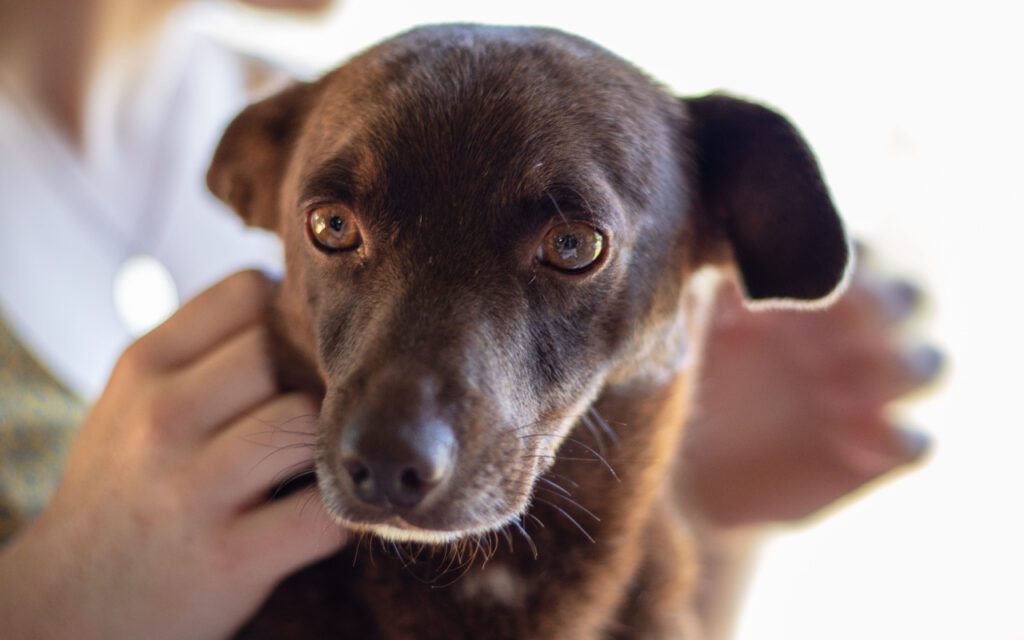While it’s well-known that rabies is typically transmitted through the bite of an infected animal, many wonder if the virus can be spread in other ways, such as through a dog’s sneeze.
Understanding the nuances of how this disease spreads is crucial for both pet owners and those who frequently interact with dogs.
What Is Rabies?

Rabies is a preventable viral disease that is most often transmitted through the bite of a rabid animal.
The rabies virus infects the central nervous system, causing progressive and fatal inflammation of the brain and spinal cord.
It’s not typically spread through airborne droplets, so it’s unlikely to be transmitted through a sneeze.
Clinically, rabies presents in two forms: furious rabies, which results in hyperactivity and excitable behavior, and paralytic or “dumb” rabies, which leads to muscle weakness and paralysis.
Initial symptoms can be flu-like, including fever and headache, but as the disease progresses, symptoms like seizures, hallucinations, and fear of water (hydrophobia) may appear.
Once the clinical signs of rabies appear, the disease is nearly always fatal. However, it is preventable through vaccination.
If bitten by an animal suspected of having rabies, immediate medical care is crucial. The treatment, known as post-exposure prophylaxis (PEP), involves a series of vaccinations that must be started before symptoms appear.
Can Dog Sneeze Cause Rabies?

No, a dog sneeze cannot cause rabies because it is not an airborne disease and cannot spread through droplets.
Rabies is a viral disease that primarily spreads through the bite of an infected animal.
The virus is present in the saliva of a rabid animal and is usually transmitted to humans via a bite or scratch.
Rabies is not an airborne disease, nor does it spread through droplets, like those from a sneeze or cough. Therefore, even if a dog with rabies sneezes, it will not transmit the virus.
However, while a dog’s sneeze cannot directly cause rabies, it’s important to note that if a dog sneezes and its saliva comes into contact with an open wound or mucous membranes (like the eyes or mouth), there could be a risk of transmission, assuming the dog is infected with the rabies virus.
Can I Get Rabies Through The Air?
No. Rabies does not spread through the air or through environmental surfaces.
According to the Centers for Disease Control and Prevention (CDC) and the World Health Organization (WHO), rabies is not an airborne disease.
Therefore, you cannot get rabies from being near an infected animal, from the animal’s sneezes or coughs, or from touching surfaces the animal has come into contact with.
However, there have been rare cases of rabies transmission through the inhalation of aerosolized rabies virus, but this is typically limited to specific circumstances, such as laboratory workers dealing with the virus directly.
Is Sneezing a Sign of Rabies in Dogs?
Sneezing is not typically recognized as a specific sign of rabies in dogs. Rabies, a viral disease affecting the nervous system, usually presents with more severe symptoms.
In the early stages, a dog with rabies may exhibit changes in behavior, such as restlessness or apprehension, both of which may be subtle. As the disease progresses, animals may display abnormal behavior.
For example, a usually docile or friendly dog might become aggressive, and an active dog may become unusually quiet and withdrawn.
Clinical signs of rabies in dogs often include fever, difficulty swallowing, excessive drooling, staggering or paralysis, and seizures. The dog may also show an aversion to food and water because of the difficulty in swallowing.
While sneezing can be a symptom of many conditions in dogs, it’s not specifically associated with rabies.
Common causes of sneezing in dogs include allergies, foreign bodies in the nasal passages, respiratory infections, and certain nasal diseases.
How Is Rabies Transmitted Between Animals
Rabies is primarily transmitted between animals through the bite of an infected animal. The rabies virus is present in the saliva of infected animals, and when they bite another animal, the virus gets transferred.
Here’s how the process typically works:
- Biting: Infected animals have the rabies virus in their saliva. When they bite another animal, the virus enters the new host through the wound. This is the most common method of transmission.
- Scratching: Although less common, the disease can also be spread if an infected animal scratches another animal with claws that have come into contact with infected saliva.
- Open Wounds or Mucous Membranes: If infected saliva comes into contact with open wounds or mucous membranes (like the eyes, nose, or mouth), the virus can also be transmitted.
- Mother to Offspring: In some cases, a mother animal with rabies can transmit the virus to her offspring, either before birth or through nursing.
It’s important to note that rabies is not an airborne disease and cannot be transmitted through the environment or feces. Also, it does not spread through blood or urine. It’s the saliva of the infected animal that carries the virus.
Can You Get Rabies From Dog Sniffing?
No. Sniffing, on its own, does not involve the transfer of saliva or any other bodily fluids. Therefore, there’s no risk of getting rabies from a dog simply sniffing you.
Rabies is primarily transmitted through the saliva of an infected animal, usually via a bite or scratch.
This is because the virus is present in the saliva of an infected animal and is introduced to a human or another animal through a break in the skin.
In Conclusion
Based on the information gathered, it can be concluded that a dog’s sneeze cannot cause rabies.
Rabies is a viral disease that is primarily transmitted through the bite of an infected animal, with the virus being present in the saliva.
It is not an airborne disease and does not spread through aerosol particles like those produced during a sneeze.
Therefore, even if a dog with rabies sneezes, it won’t transmit the virus this way.
Although theoretically, if the saliva from a sneezing rabid dog were to come into contact with an open wound or mucous membranes, there could be a risk of transmission, this is considered an uncommon way for the virus to spread.
Thus, the chances of contracting rabies from a dog’s sneeze are extremely low.





Leave a Reply